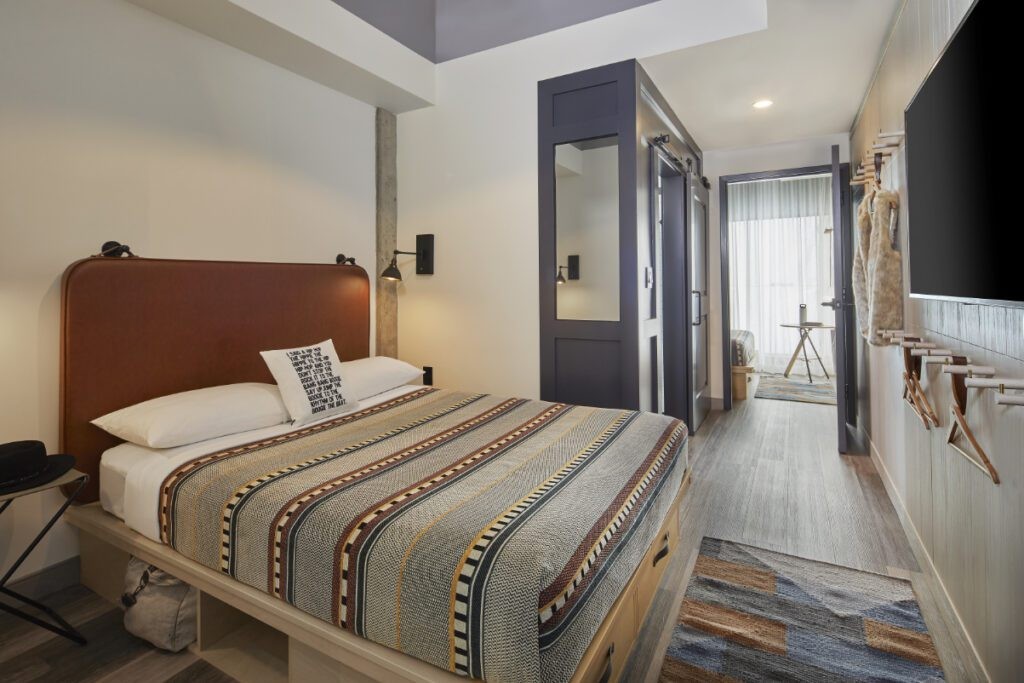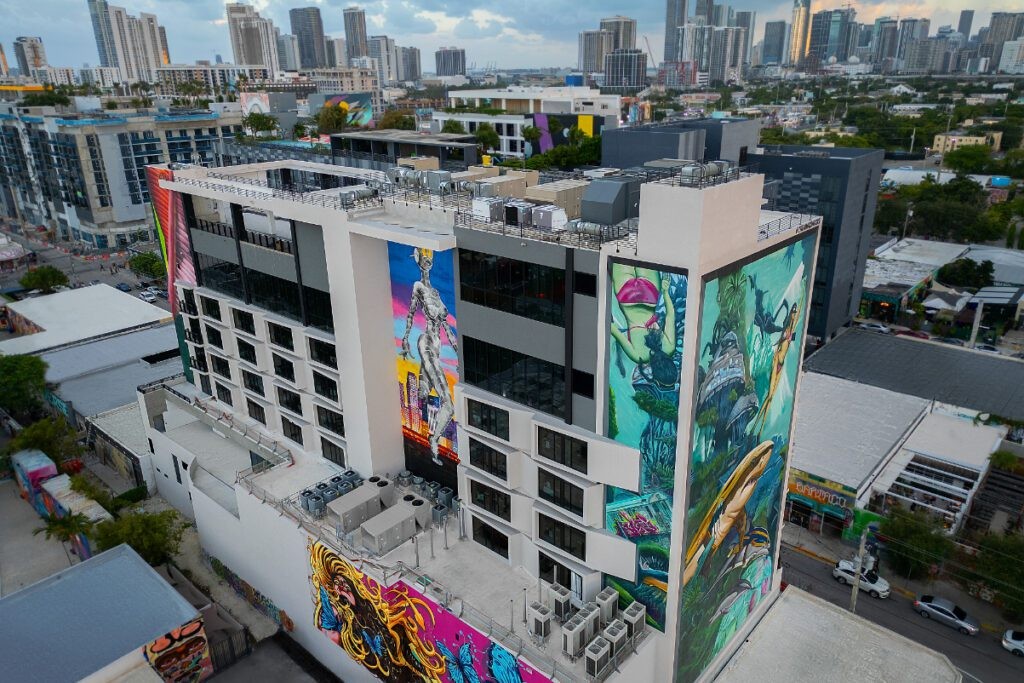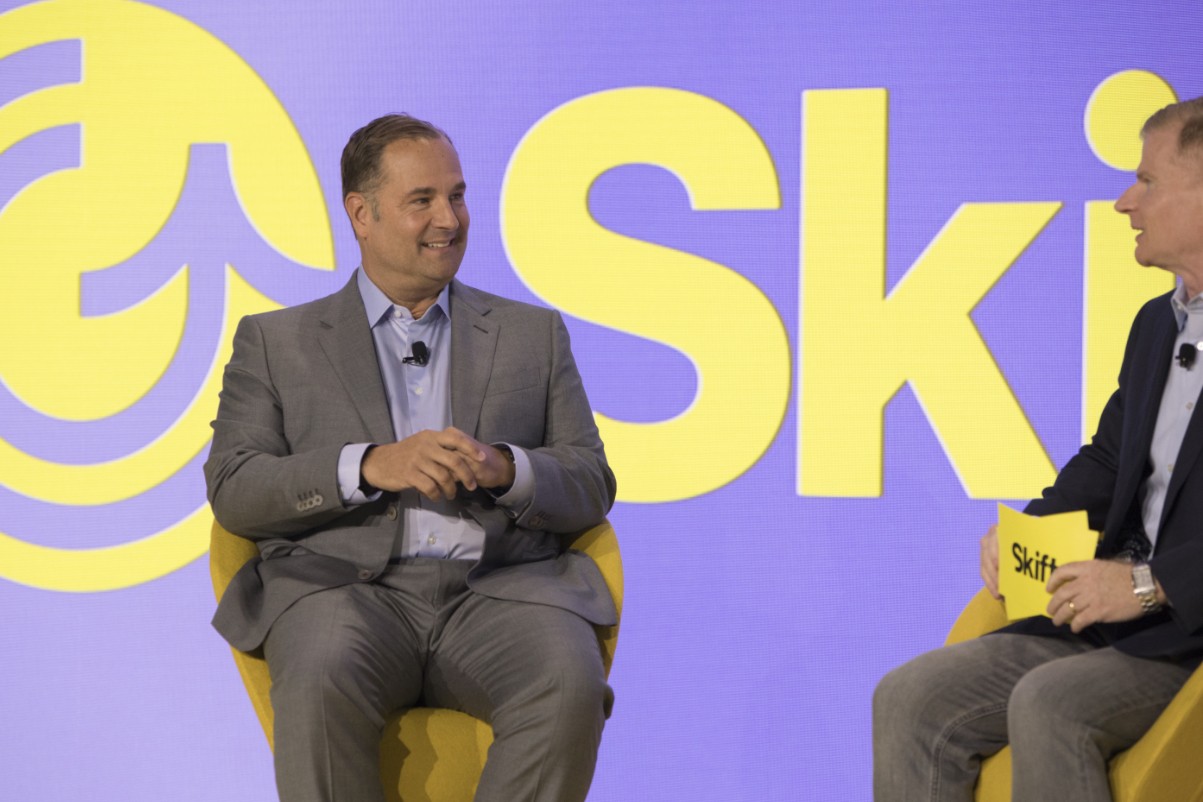Hotel chains can often seem indistinguishable, blending into a predictable landscape of beige and sameness. However, Marriott aimed to disrupt this with Moxy Hotels, a brand designed to capture attention much like the vibrant neon signs that often adorn its lively lobbies. Popular with Gen Z travelers, Moxy has now reached its 10th anniversary. The question is, can this brand mature and expand without losing the youthful appeal that defined its initial success?
Key Innovations of Moxy Hotels: Reimagining the Hotel Experience
Launched in 2014, Moxy Hotels has rapidly expanded its footprint to over 135 properties globally, with ambitious plans for further growth. This growth is built on a foundation of rethinking traditional hotel concepts, focusing on minimalist yet stylish rooms and dynamic social hubs. Moxy’s approach involves a keen understanding of local cultures, ensuring each hotel offers a unique guest experience while maintaining brand consistency – a delicate balance in the competitive hospitality sector.
From Concept to Reality: The Genesis of Moxy
Rewind to 2014: Pharrell Williams’ “Happy” dominated the airwaves, and social media was awash with the ice bucket challenge. Amidst this cultural backdrop, Marriott recognized an opportunity to innovate and connect with a younger demographic. The result was Moxy Hotels, a select-service brand specifically designed to resonate with 20-something travelers.
Moxy Hotels was Marriott’s bold attempt to redefine “cool” in the hotel industry. Against industry norms, it has proven remarkably successful. Celebrating its first decade, Moxy boasts over 135 operational hotels and is set to expand further, with 17 additional locations planned across Europe by 2025 alone.
The development of Moxy was a multi-year process, but the core concept was relatively straightforward. Imagine blending the functional design ethos of Ikea (early Moxy hotels even had ties to Ikea’s manufacturing) with the economic needs of developers seeking to maximize guest capacity per square foot. Position these hotels in up-and-coming neighborhoods where affordable lodging options for Gen Z were scarce, and then amplify it all with strong “lifestyle” branding.
Brian Jaymont, Senior Director and Global Brand Leader for Moxy, encapsulates the brand’s vision: “We want it to feel like a bar that just happens to have rooms attached.”
Deconstructing the Traditional Hotel Room
For decades, the hotel industry operated under a fundamental principle: the guest room was paramount. Spacious accommodations, luxurious bedding, and extensive in-room amenities were the benchmarks of quality and luxury. Moxy boldly challenged this established norm, fundamentally altering the perception of what a hotel room should be.
Moxy’s rooms are deliberately compact, averaging around 185 square feet, and eschew traditional hotel furniture like dressers and closets. Instead, guests typically find streamlined features such as wall-mounted pegs for clothing, space-saving foldable desks, and minimal additional furnishings.
This design philosophy would have been considered unconventional in previous generations. However, it resonated with millennials and Gen Z travelers who were already accustomed to smaller living spaces in urban environments and embraced minimalist lifestyles inspired by figures like Marie Kondo.
Hotel investors and owners quickly recognized the financial advantages of this model. Fitting more rooms into a smaller footprint translated to significant cost savings and made previously unprofitable locations viable for hotel development. From repurposed office buildings to former bank structures, Moxy became a brand synonymous with “adaptive reuse,” turning underutilized spaces into trendy accommodations.
 A queen suite at the Moxy Hotel in Columbus, Ohio's Short North district. Source: Marriott
A queen suite at the Moxy Hotel in Columbus, Ohio's Short North district. Source: Marriott
The Rise of the Lively Lobby: Socializing and Travel Tweaks
Historically, select-service hotel lobbies were largely ornamental spaces, rarely utilized by guests beyond check-in and check-out. Moxy revolutionized this concept by transforming lobbies into vibrant, multifunctional social hubs. These spaces now serve as bars, cafes, co-working areas, and event venues, fostering a dynamic atmosphere.
Moxy distinguished itself further by eliminating the traditional front desk. Guests are greeted and checked in at the bar, immediately setting a relaxed and informal tone.
Hotel operators appreciate Moxy’s strategy of creating bustling social environments that appeal to both hotel guests and local residents. These lively lobbies, bars, and cafes are not just about ambiance; they are crucial revenue centers, driving high-profit food and beverage sales.
While other brands like CitizenM and Yotel also pioneered the concept of smaller rooms paired with expansive lobbies, Moxy carved out its niche with a distinct aesthetic and price point, appealing to a broader segment of experience-focused travelers.
Staying Relevant: Adapting to Evolving Travel Preferences
Initially, Moxy targeted what Jaymont described as “backpackers in their mid-20s” seeking affordable and functional lodging between adventures. However, the brand’s appeal has broadened over time.
Today, Moxy aims to attract a wider “psychographic” of travelers across age groups who prioritize experiences over extravagance and seek hotels that offer a taste of local culture. This shift reflects a deeper understanding of evolving travel motivations and preferences.
“We recognize that Moxy can’t be everything to everyone, and we are comfortable with that,” Jaymont acknowledged. This focused approach allows Moxy to concentrate on delivering a specific type of travel experience exceptionally well.
To maintain relevance and stay attuned to its target audience, Moxy conducts ongoing market research. This ensures that the brand’s offerings and atmosphere continue to align with the desires and expectations of modern travelers.
 Skyline view of the Moxy Miami Wynwood Hotel. Source: Marriott
Skyline view of the Moxy Miami Wynwood Hotel. Source: Marriott
Globalizing the Moxy Experience: Local Touches, Consistent Brand
As Moxy expands into diverse locations, from Miami’s vibrant Wynwood district to Tanzania, Colombia, and the Middle East, the brand faces the challenge of balancing global consistency with local authenticity. Travelers expect a certain level of familiarity with the Moxy brand, yet they also crave unique, location-specific experiences.
Moxy’s solution is to standardize the essential room experience while allowing public spaces to become showcases of local culture and creativity. This strategic travel tweak ensures brand recognition while embracing local flavor.
“We deliberately avoid using identical artwork in every lobby,” explains Aliya Khan, VP of Design Lifestyle Brands at Marriott. “Instead, we tailor each project to the local context, collaborating with regional artists and craftspeople to design spaces that resonate with their location and curate lobby soundtracks that reflect the local vibe.”
In Wynwood, Miami, renowned graffiti artists have transformed the Moxy hotel into a seamless extension of the neighborhood’s iconic street art scene. In Tanzania, Moxy partners with local artisans to craft unique lobby décor, embedding the hotel within the local artistic community.
When the first Moxy opened in Miami’s South Beach in 2021, it introduced the brand’s inaugural rooftop pool, a feature tailored to the location’s climate and lifestyle.
Khan describes the design process for the Miami location: “We brainstormed the concept of a cabana, aiming to capture the essence of high-experience for guests without high development costs for owners. This led to ideas like tent-like structures with plush, oversized lounge cushions, and a slightly reduced number of pool loungers. We drew inspiration from desert tents rather than traditional cabanas, incorporating printed patterns inside to enhance the evocative atmosphere.”
Expanding Horizons: Moxy’s Global Growth
Currently operating in 29 countries, Moxy has ambitious plans to venture into 20 additional countries, signifying its global aspirations. However, international expansion brings complexities, particularly in adapting the brand to resonate with local cultures and norms.
For instance, in Middle Eastern countries where alcohol consumption is less prevalent, Moxy has adapted by shifting the check-in experience from a bar to a café setting. This cultural travel tweak ensures the brand remains welcoming and appropriate for local customs.
Moxy adopts a flexible approach with developers, providing design principles rather than rigid rules. While closed closets are not part of the Moxy design ethos, some hotels have implemented open metal hanging systems instead of simple wall pegs.
“We’ve enhanced the quality of hangers because they are now more visible due to the open hanging concept and are frequently touched by guests,” Khan noted. This attention to detail in even seemingly minor aspects reflects Moxy’s commitment to enhancing the guest experience.
Interestingly, the Moxy property in downtown Nashville has discovered unexpected demand for interior, windowless rooms. These “internal” rooms have become highly sought after by guests like musicians and nightlife workers who prioritize soundproof environments for restful sleep.
“Sometimes, these windowless rooms command premium rates because of their exceptional quietness,” Jaymont revealed. This illustrates how Moxy adapts to specific location needs and guest demands, sometimes in surprising ways.
Key Takeaways: Lessons from Moxy’s First Decade
Moxy’s initial steps weren’t without missteps. Early airport locations in Europe lacked the distinctive personality that would later define the brand. As an asset-light company, Marriott initially found it challenging to rapidly experiment and refine various concepts. To overcome this, Marriott partnered with Lightstone, a development firm, to create a flagship U.S. property in Times Square. Lightstone owned the property and collaborated closely with Marriott to perfect the Moxy concept.
From these experiences, Moxy’s leadership team has gleaned valuable lessons:
-
Deeply Understand Your Audience: By concentrating on a specific psychographic rather than a broad demographic, Moxy has cultivated a loyal customer base that identifies with the brand’s ethos.
-
Identify and Serve an Underserved Niche: Moxy successfully targeted a customer segment that was not being adequately addressed by other brands in Marriott’s portfolio, creating significant opportunities for development partners.
-
Challenge Industry Conventions: By optimizing space to accommodate more guests per square foot and boosting revenue through vibrant bar and beverage services, Moxy has effectively inverted the traditional hotel economic model. These innovative travel tweaks have proven to be key to Moxy’s success and continued growth.
 Marriott CEO Anthony Capuano: Loyalty, Luxury, and Hotel Tech — Full Video, Skift Global Forum 2024
Marriott CEO Anthony Capuano: Loyalty, Luxury, and Hotel Tech — Full Video, Skift Global Forum 2024
[
Marriott CEO Anthony Capuano: Loyalty, Luxury, and Hotel Tech — Full Video, Skift Global Forum 2024
Marriott International President and CEO Anthony Capuano discussed the current state and future trajectory of the hospitality sector at the Skift Global Forum in New York City, providing insights from the perspective of the world’s largest hotelier.
](https://skift.com/2024/09/30/marriott-ceo-anthony-capuano-loyalty-luxury-and-hotel-tech-full-video-skift-global-forum-2024/)
Read More
 Gen Z Gives Surprising Boost to Some Hotels
Gen Z Gives Surprising Boost to Some Hotels
[
Gen Z Gives Surprising Boost to Some Hotels
Hoteliers catering to Gen Z are observing that today’s young adults are allocating a larger portion of their discretionary income to travel compared to Millennials at the same life stage.
](https://skift.com/2024/05/15/gen-z-gives-surprising-boost-to-some-hotels/)
Read More
Accommodations Sector Stock Index Performance Year-to-Date
What am I looking at? This chart shows the year-to-date performance of hotel and short-term rental sector stocks within the ST200. This index encompasses publicly traded companies across global markets, including international and regional hotel brands, hotel REITs, hotel management companies, alternative accommodations, and timeshares.
The Skift Travel 200 (ST200) aggregates the financial performance of nearly 200 travel companies, representing over a trillion dollars in value, into a single metric. Explore more on hotel and short-term rental financial sector performance.
Learn about the full methodology behind the Skift Travel 200.